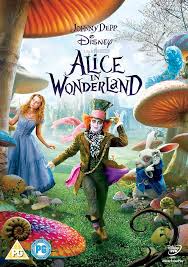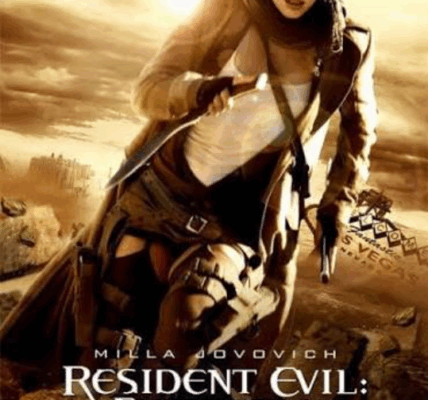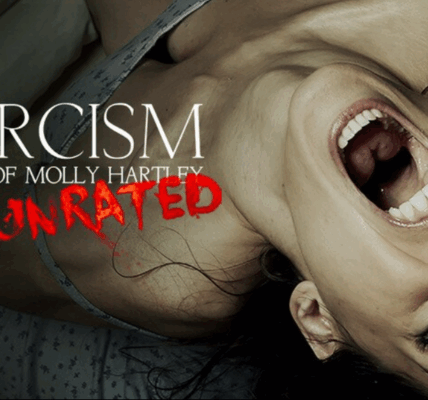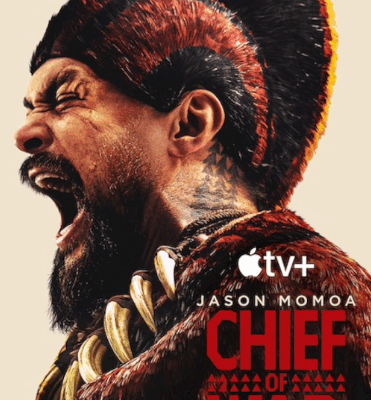Movie Overview
- Title: Alice in Wonderland
- Release Date: March 5, 2010 (USA)
- Genre: Fantasy / Adventure / Family
- Director: Tim Burton
- Main Cast:
• Mia Wasikowska as Alice Kingsleigh
• Johnny Depp as the Mad Hatter
• Helena Bonham Carter as the Red Queen
• Anne Hathaway as the White Queen
• Other voices/characters: Alan Rickman (Caterpillar), Stephen Fry (Cheshire Cat), Michael Sheen (White Rabbit) etc. - Where to Watch: Currently available via Disney+ in many regions; also rent/purchase via digital platforms.
1. Plot Summary
Alice Kingsleigh is a 19-year-old young woman who, as a child, once visited Wonderland (here rebranded “Underland”) but has repressed those memories. She is expected to conform: she is to accept a marriage proposal from Hamish Ascot, a wealthy suitor whom she does not love.
At a garden party, Alice sees the White Rabbit again, follows it, and falls down a rabbit hole into Underland, where many of her old acquaintances — the Mad Hatter, Cheshire Cat, White Queen, Red Queen, Caterpillar, etc. — still exist.
She learns that Underland is oppressed by the tyrannical Red Queen, and that there is a prophecy (or destiny) that the “right Alice” will slay the fearsome creature called the Jabberwocky, overthrow the Red Queen, and restore the White Queen to power.
Alice, though initially skeptical and unsure, gradually embraces this destiny. The setting shifts from garden parties in Victorian England to lavish and surreal dream-like landscapes, twisted forests, huge fungi, bizarre creatures, and ultimately to large-scale conflict between the forces of Underland. Her journey is as much about self-discovery and courage as about literal battles.
2. Notable Elements
What makes Alice in Wonderland stand out — both impressive moments and some weaker spots.
Strengths / Memorable Features
- Visual Design / Art Direction / Costumes: The film is visually lush and imaginative. The art direction and costume design are particularly strong, capturing Tim Burton’s distinctive aesthetic. The Red Queen’s gigantic head, whimsical sets, color contrasts between Underland’s sinister and magical regions are very striking.
- Danny Elfman’s Score: The music contributes significantly to the mood: whimsical, creepy, beautiful, heroic at times. It enhances the emotional tone and fantasy.
- Performance by Johnny Depp & Helena Bonham Carter: The Mad Hatter is eccentric, tormented, touching; the Red Queen is larger than life, overindulgently dramatic in a way that fits Burton’s style. They both provide vivid character moments.
- Alice’s Character Arc: Rather than being just a passive wanderer, Alice has agency. Her choice not to accept a predetermined path (the marriage), her gradual acceptance of responsibility in Underland, her doubt and courage—this gives the film some emotional grounding.
Weaknesses / Less Successful Aspects
- Plot / Narrative Coherence: Some critics felt the story becomes less focused in the second half. The build-up is strong, but the climax (battle sequences, the Jabberwocky fight) is more generic and less emotionally powerful compared to the visual spectacle.
- Tone Fluctuations: The film alternates between dark, strange, whimsical, and epic battle scenes, which sometimes feels uneven. Some of the surrealness can feel disjointed next to action sequences.
- Character Development: Some secondary characters, while gorgeous design-wise, feel more symbolic or decorative than full people. Alice herself is more rounded, but many Wonderland characters don’t evolve much.
- Reliance on Visuals vs Emotional Depth: For some viewers, there is more sparkle than heart: the movie excels in scene-setting, weird creatures, scenery, but less in making every emotional beat land deeply.
3. Themes & Messages
Here are some of the underlying messages and themes, and how they resonate (even if not explicitly holiday related).
- Destiny / Self-Discovery: Alice’s journey is one of realizing who she is, what she values, and stepping into a role she was unsure of. The idea of “you might be meant for something greater than what you think” is central.
- Courage vs Conformity: Alice resists social expectations (marriage, propriety) and has to find courage to follow her instincts. That conflict between duty/society and personal freedom is strong.
- Belief & Imagination: The film leans heavily on the idea that imagination matters, that magical places — dreams, memories — have real emotional power. Alice’s forgotten journey and her remembering of it is symbolic of reconnecting with wonder.
- Good vs Tyranny: The Red Queen’s oppression, the idea of restoring justice and kindness (via the White Queen), freeing Underland, etc., reflect classic struggle of authoritarian rule vs compassion, bravery, justice.
- Identity & Memory: With Alice having forgotten Wonderland, with Underland being distorted, there are questions about memory (what is real, what we choose to remember), identity (who Alice really is) and how past experiences shape present.
Although not a “holiday film,” these themes connect to times of reflection, transitions (e.g. growth), and values like courage, hope, standing up to oppression, which many people find resonant during festive or contemplative occasions.
4. Personal Impressions
What I liked most, what less so, from my perspective.
What I Liked
- I was impressed with how Burton and his team created a Wonderland that is simultaneously beautiful and strange. It captures weirdness in a way that feels immersive rather than merely decorative.
- Alice’s journey felt more meaningful because she was older, had doubts, had societal pressure. That makes her arc more accessible for an older audience, not just children.
- The performances mentioned above: especially Depp, Wasikowska, Bonham Carter. The way the Red Queen’s rage and insecurity are portrayed (via exaggerated visuals, voice) is memorable.
- The film treats the fantasy seriously: danger matters, choices have cost (Alice risks, the Wonderland creatures have sufferings). The visuals serve the story, not just spectacle.
What I Less Enjoyed
- As noted, the action climax felt generic. Once the story moved into big battle territory, it lost some of the quirky charm and it felt more like many fantasy blockbusters, rather than something uniquely Burton.
- The pacing sometimes drags: the first half builds beautifully, but in places the momentum stalls or it meanders between Wonderland’s rules without always pushing Alice’s internal stakes forward until late.
- Some of the supporting Wonderland characters are underused. Weirdness and design do a lot, but sometimes the emotional impact could have been deeper if more had been done with motivations, consequences.
- Occasionally the film feels more focused on spectacle than coherence; certain plot conveniences or oversights (e.g. how characters seem not to remember Alice, or how quickly alliances shift) may bother someone who cares about logic or consistency.
5. Audience Recommendations
Who is likely to enjoy this movie, and under what mood.
- If you love fantasy worlds, visual design, creative effects and costume work, you will probably enjoy it. It’s especially good if you like Tim Burton’s style — his gothic, whimsical, somewhat dark take on fairy tales.
- Audiences who appreciate coming-of-age stories, or stories about stepping into one’s own potential, resisting societal expectations, etc., will find Alice’s arc satisfying.
- Fans of classic Alice in Wonderland lore who are okay with reinterpretation will enjoy seeing a fresh take: older Alice, the prophecy, the prophecy, more action, etc.
- Good family movie for older children / teens; younger kids might be more overwhelmed by darker or bizarre aspects.
Less suitable if:
- You prefer stories with tight logic and minimal fantasy weirdness, or you dislike visual over substance approaches.
- If you’re expecting a very faithful adaptation of Lewis Carroll’s texts; many changes are made to serve the new story.
- If you don’t like big action sequences in fantasy (battle scenes, creature fights), or want gentler stories.
6. Conclusion & Rating
Alice in Wonderland (2010) is a mixed bag — but more good than bad. It’s often gorgeous to look at, imaginative, and emotionally richer than some other adaptations. When it works, it works beautifully: Alice growing into her role, Mad Hatter’s madness, the visual imagination. When it falters, it’s in the pacing, occasional overreliance on effects, and tendency toward generic fantasy tropes in the climax.
Final Recommendation: If you’re in the mood for a fantasy escape, with strangeness, beauty, and a hero’s journey with visual flair, this is a film worth watching. It won’t be perfect for everyone, but it has enough heart and inventiveness to make it memorable.
Star Rating: ★★★★☆ (4 out of 5 stars)




